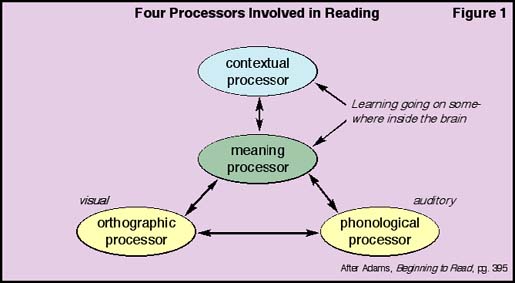 Here are some things I recommend to parents who want to prepare their child for reading. You can do these things starting when the child is in the crib. If you do, your baby will be better prepared to learn to read when he or she gets to kindergarten.
Here are some things I recommend to parents who want to prepare their child for reading. You can do these things starting when the child is in the crib. If you do, your baby will be better prepared to learn to read when he or she gets to kindergarten.
As the inventor of FiddleDisks (clear, colored construction toys also sold under a separate license as solid colored Brewster Buttons), I've found them helpful in pre-reading activities, starting in infancy.
The first step: build some shapes out of FiddleDisks or Brewster Buttons. Build shapes that vary in color, count, and shape. Examples: three red ones in a straight line, five green ones in an "L" shape, eight blue ones in a square, etc. Use combinations of 3, 4, 5, up to ten and simple shapes, and the primary colors. Use push pins and thread to hang these shapes from the ceiling where the baby can see them.
Play the Flashlight Game
Then, when the child is beginning to look around and pay attention to the visual environment, use a flashlight and shine it on the various shapes. Say "look, there's a line of three red ones." Watch to see that the baby's eyes are following the beam of the light and noticing the shape hanging from the ceiling. Don't talk baby talk. Use a normal voice as though you were telling an older child. Then point the light beam to another shape, and do another count and another color. Do this for as long as the child keeps watching. Quit when he or she no longer follows the beam. It might be just a minute or two, or it might be more. The important thing is to not go on too long. Two minutes each day is better than a fifteen minutes once a week. Here's the idea: Look at Fig.1. The blocks represent four processors in the brain that researchers feel represent what happens in reading.

Make Your Own Hanging Things
Before we go any farther, let me put in a disclaimer. You don't have to run out and buy FiddleDisks or Brewster Buttons for this. You can cut out shapes from magazines, cereal boxes, color your own shapes or use familiar household objects to hang. Just make a rich visual environment for that infant's evolving brain.
Helping the Brain Develop
When you are doing this business with the flashlight, you are exercising the three lower processors; you are helping them build the blood supply to their particular regions in the brain. It's sort of an "intellectual aerobics exercise" if you will. Combining this paradigm with Dr. Sally Shaywitz's book Overcoming Dyslexia describing the functional MRI brain scans she's done convinced me that this is the most useful model yet for understanding what happens during reading. The games and crossword puzzles I have designed were developed from these influences.
Not an Expert
Understand something, please: I'm not a psychologist; I'm not a reading expert. I'm an engineer, an instructor, and a game and puzzle designer. I've been privileged to know and work with some very talented people who are reading experts and learning psychologists. And I've read some very informative and convincing books on the subject. But what I do is design and manufacture games and puzzles and toys that add motivation to learning. What you're reading here is not original with me. It's a compilation of what I've been able to glean from the experts.

Steve Tattum and F.A.S.T.
One of those talented people I've been fortunate to work with is Stephan Tattum, of the F.A.S.T. Learning Center at Denver Academy (fastlearningllc.com). Steve has put together what I believe is the best remedial reading program yet. I recently attended one of Steve's lectures on reading, and he suggested something I want to add to the Adams/Shaywitz concept I mentioned above. Look at Fig. 2. Steve makes the point that the Whole Language Programs and the Phonics Programs are both effective, but not completely so. Steve's program combines the best of both disciplines. I'm tremendously impressed by what Steve's accomplished with poor readers.
Adopted from an article printed in Buyer's Quarterly. Used by permission. For additional informational materials, please go to abc2z.com.